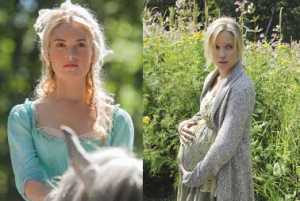Just as Scheherazade spun tales for the king that kept his interest for 1001 nights, so do the shows we watch spin tales that entrance and delight us until we’ve binge-watched our way through an entire series.
From the oldest listed fairy tale based television program in our database, a Disney Animated Short on Cinderella that was released in 1922, to Toyota’s latest C-HR ad, also based on Cinderella, TV audiences have been treated to a wide variety of shows, episodes, and advertisements that take inspiration from fairy tales.
https://www.youtube.com/watch?v=S4SS4Bk4K4o
Television has long been considered lower than other art forms like film or theater. Episodes are brief, rarely taking up more than an hour. Production time is also shorter, both because of the brevity of each episode, and because of the typical lack of artistry (while films might shoot a scene from several different angles, TV show cameras are often static). Then there is the wide distribution of television, which makes shows more readily available to audiences, especially when compared to something like Broadway tickets. Most of these aspects of television have shifted and changed, especially over the last decade, but these supposed drawbacks are part of what makes TV the perfect medium for retelling our favorite fairy tales.

The brevity of an episode of TV reflects back to the typical length of tales when they were collected. They were often just a few pages long with very little detail, unlike the novel-length retellings we see today. Films tend to add to and embellish fairy tales as they retell them, while television often sticks to the more basic, pared-down versions so as to focus on the movement of the plot. If TV shows took as long to establish themselves as films often do, they would be likely to lose their audiences. Instead, they must immediately immerse the viewer in the world of the tale, giving them something familiar with just enough of a twist that it feels fresh and new.
Television is often less formal than film; TV feels more intimate because of the quick and unselfconscious way it is filmed as well as its general availability. Originally, fairy tales were told orally in small groups, the telling of tales was intimate and local, just as TV is today. The only difference here is that storytellers could make changes to the tale depending on the mood and desires of the audience, whereas TV is scripted and therefore loses that ability to adapt to its audience.

Television operates in a world similar to our own, the characters are often less glamorous and feel more realistic compared to those in film. The settings are similar: no matter how fantastical a TV-scape might be, there’s usually something about it that is familiar to the audience, giving the impression that we might actually find ourselves in such a world one day. This realm of non-reality that mirrors reality can also be found in fairy tales where characters move through worlds that are clearly not our own, yet still resonate within us as being part of some not-so-distant past. We know these tales so well that the characters and worlds have become a part of us—TV provides us with a new lens through which to view both the tales and our own world.
As TV grows in popularity and importance in the academic world, so too will its influence on the way we tell fairy tales, and as it evolves, the tales will evolve to match what we value in our society. Using television studies in conjunction with fairy tale studies provides us with new tools and keys to understanding the way our society and our world works. Fairy tales provide us with an understanding of the past and its effects on the present, while the newer invention of television provides us a way to look at where we are going and how we are using the past to define our future.